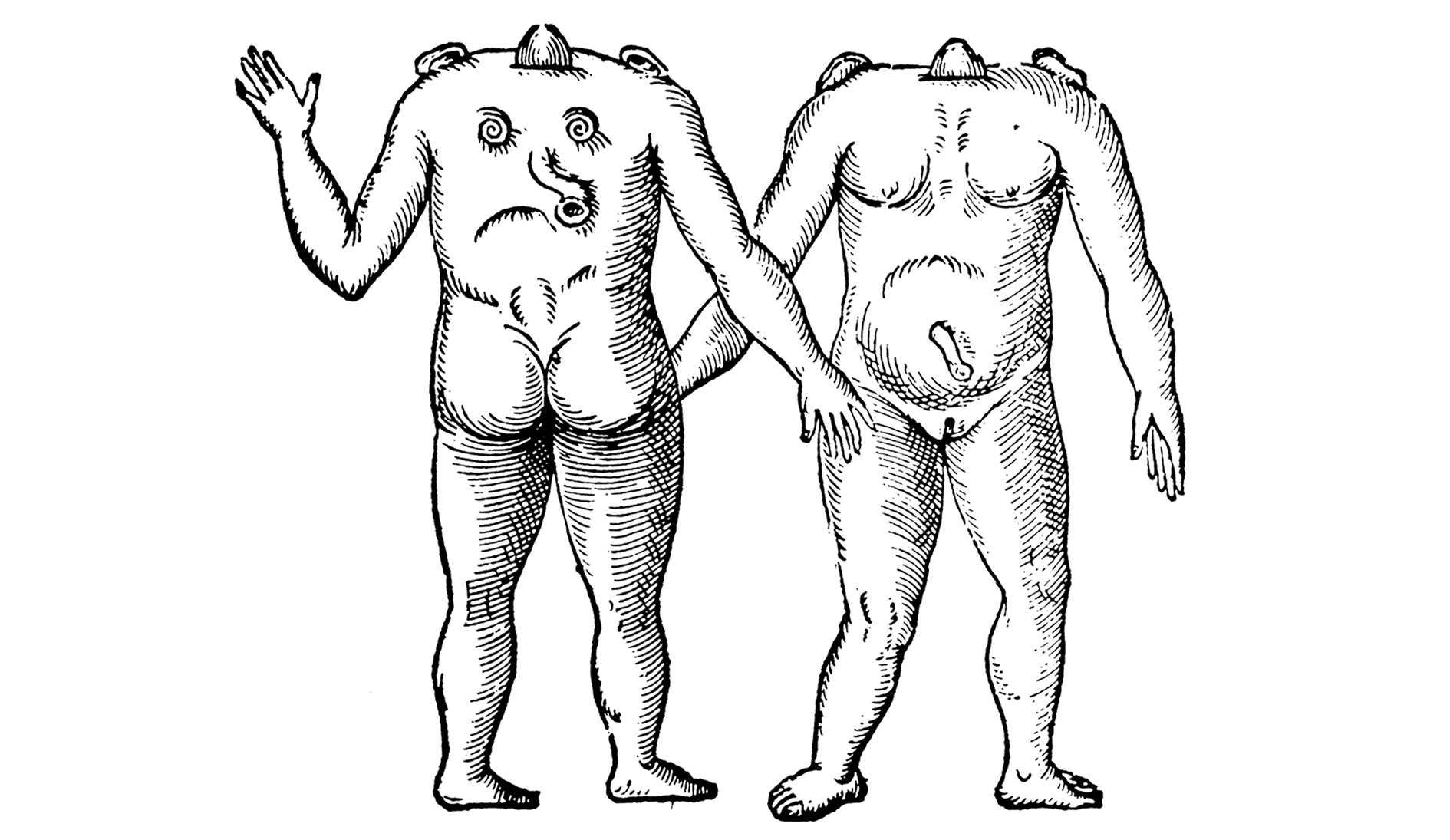For more on the human (and the many other things referenced in this article), see: Aaron T. Norton and Ozzie Zehner, “Which Half Is Mommy? Tetragametic Chimerism and Trans-Subjectivity,” Women's Studies Quarterly vol. 36 (2008), 106-125; Allan Sekula, “The Body and the Archive,” October vol. 29 (1986), 3-64; A.R. Templeton, “The theory of speciation via the founder principle,” Genetics 94 (1980), 1011-1038; Cathy Trost, “The Blue People of Troublesome Creek,” Science 82 (November 1982); David Gelertner, 1939: The Lost World of the Fair (Free Press, 1995); David Serlin, “The Other Arms Race,” in The Disability Studies Reader: Second Edition, ed. Lennard J. Davis, (Routledge, 2006), 67-75; Donna J. Haraway, Simians, Cyborgs, and Women: The Reinvention of Nature (Routledge, 1991); Erica Fudge, “How a Man Differs from a Dog,” History Today (June 2003), 38-44; Eustace M. Tillyard, The Elizabethan World Picture (Vintage, 1959); Francis Galton, “Generic Images,” in Proceedings of the Royal Institution, vol. 9, 1879; Gabriel Egan, “Gaia and the Great Chain of Being,” 2011, →; Genetic Engineering and Society Center, “George Church on the Future of Human Genomics and Synthetic Biology,” YouTube, 28:24, September 19, 2014, →; Henry Dreyfuss, Designing for People (Simon and Schuster, 1955); Kenneth Chang, “Beings Not Made for Space,” The New York Times, January 27, 2014; Lauren F. Friedman, “The Stranger-Than-Fiction Story Of A Woman Who Was Her Own Twin,” Business Insider, February 2, 2014, →; Lennard J. Davis, “The End of Identity Politics and the Beginning of Dismodernism: On Disability as an Unstable Category," in The Disability Studies Reader: Second Edition, ed. Lennard J. Davis, 231-242 (Routledge, 2006); Manfred E. Clynes and Nathan S. Kline, “Cyborgs and Space,” Astronautics (September, 1960), 26-27, 74-76; Neal Stephenson, Seveneves (William Morrow, 2015); National Space Biomedical Research Institute, “The Body in Space,” →; Sarah Knapton, “The astonishing village where little girls turn into boys aged 12,” The Telegraph, September 20, 2015, →; W.B. Provine, “Ernst Mayr: Genetics and speciation,” Genetics 167 (2004), 1041-1046.
This text is part of a larger project, including furniture designed with Bureau V and a website of stories designed with Luke Gould and Afonso Martins.
